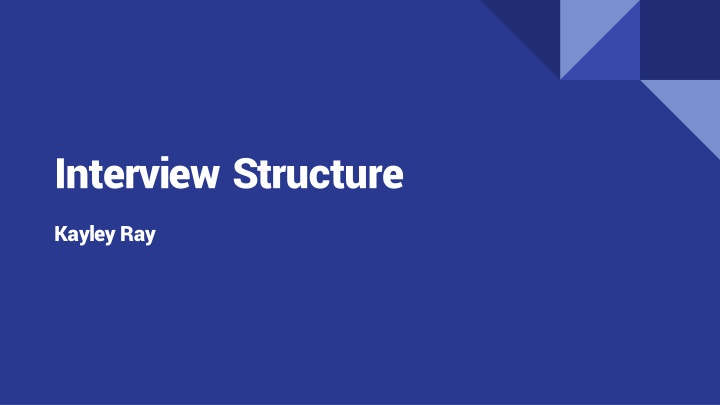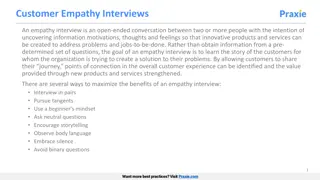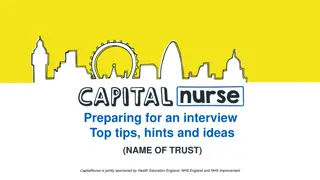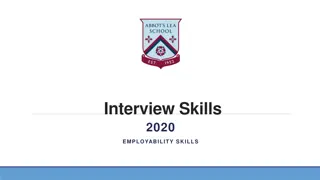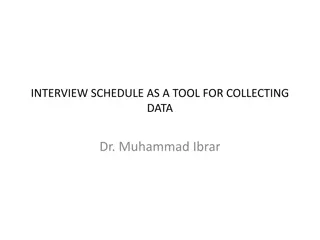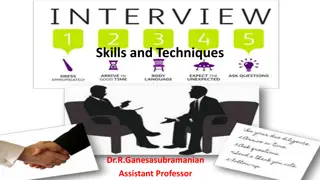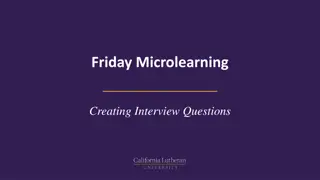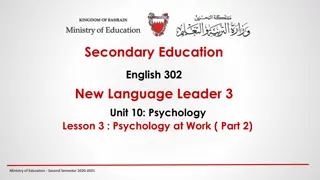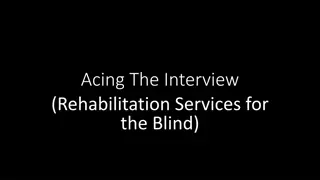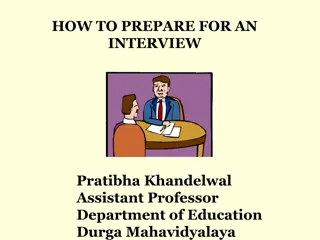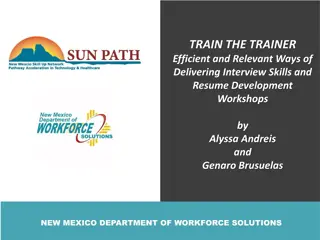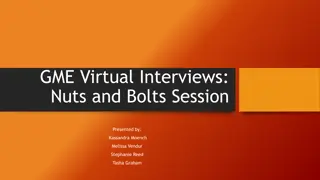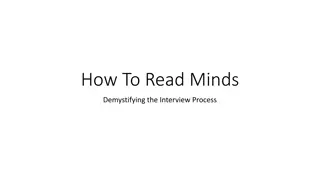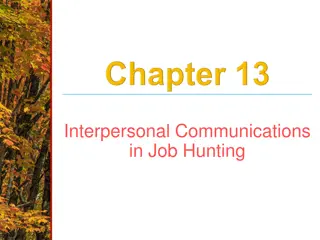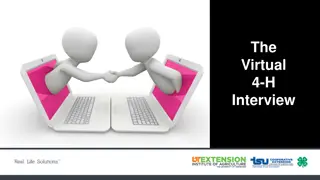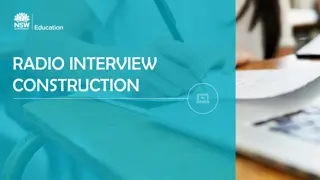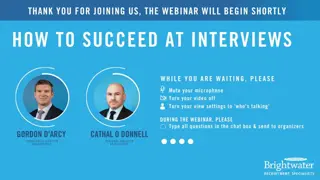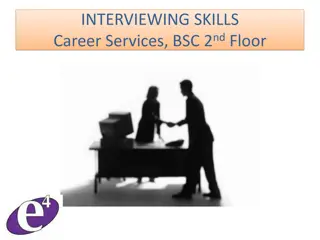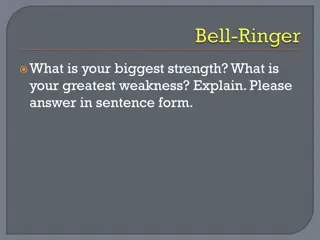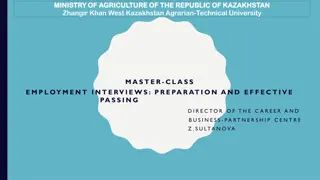Interview Structure and Best Practices
Structured approach to conducting interviews, covering opening, body, and closing aspects. Discover effective question sequencing models like Tunnel, Funnel, and Hourglass. Learn how to establish rapport, ask probing questions, and close interviews positively. Engage in partner activities and reflections to enhance interview guides. Enhance your interviewing skills for successful and insightful interactions.
Download Presentation

Please find below an Image/Link to download the presentation.
The content on the website is provided AS IS for your information and personal use only. It may not be sold, licensed, or shared on other websites without obtaining consent from the author.If you encounter any issues during the download, it is possible that the publisher has removed the file from their server.
You are allowed to download the files provided on this website for personal or commercial use, subject to the condition that they are used lawfully. All files are the property of their respective owners.
The content on the website is provided AS IS for your information and personal use only. It may not be sold, licensed, or shared on other websites without obtaining consent from the author.
E N D
Presentation Transcript
Interview Structure Kayley Ray
Opening the Interview The Two Step Model Establish Rapport Orient the Interviewee Rapport Verbal A warm greeting or introduction, Asking personal Questions Non-Verbal Handshake, Eye contact, etc. Professionalism Orientation
Body of the Interview: Question Sequence Topical Sequence Follows natural divisions of a topic. Time Sequence The questions follow a chronological sequence. Space Sequence Questions are organized spatially (EX: North to South, East to West) Cause to Effect Sequence First discusses what caused an event or phenomenon, then discusses the result of that event.
Body of the Interview: Question Sequence Tunnel Each topic changes topic, functions well for simple interviews Funnel Starts with open questions and ends with closed, prevents interviewer bias Inverted Funnel Starts with closed questions and ends with open, helps interviewee open up about emotional topics Hourglass Open questions to closed to open again, when you want to use a funnel but still want to open
Closing the Interview End with a positive attitude towards the future Until next time I hope you enjoy your semester Express appreciation for their time given Thank them, acknowledge that they did you a favor Briefly summarize the conversation Do not monologue, keep it a dialogue
Partner Activity Get out your interview guide rough drafts and discuss what types of sequences you may want to implement into your interview guides and why those sequences would work the best.
Activity One Reflection Which sequences do you think will work best for your interviews?
Probing Probing is a good way to create an authentic dialogue in the interview Helps create conversation if the interviewee is shy or not giving sufficient information Gives us the chance to get specific information
Types of Probing Short signs of understanding I see That is interesting head nods An expectant pause Be careful to not make interviewee uncomfortable though Repeating/rewording the question Helps the interviewee think more about the question Repeating/rewording their reply Often results in the interviewee thinking of something to add
Activity Round Two Please turn to your partner and ask them about their weekend. Use this opportunity to implement probing strategies mentioned in the lesson. After the questioning, discuss which types of probing felt the most natural, and the pros and cons of each type.
Activity 2 Reflection Which probing strategies worked the best? Which, if any, felt awkward or unnecessary?
References Stewart, C. & Cash, W. _2008_. Chapter 4:Structuring the interview. In Interviewing: Principles &Practices. New York, NY: McGraw-Hill Survey Research Center _1969_. Stimulating discussion: Probing. Interviewer s Manual. Ann Arbor, MI: Institute for Social Research.
